How to Bring Spring from Vivaldi’s Four Seasons Alive for your Music Classroom
I don’t know about you, but I have always struggled making a composer lesson fill a whole class period. Until I created an escape room in music. On of my favorites is Spring from Vivaldi’s Four Seasons. Do you have those composer lesson books that you were excited to find only to discover that the one page bio, activity and song are not enough to fill the class time? Now what? You can’t even use it as a great sub plan without adding more to it.
I always wonder if those people who wrote that lesson plan actually taught general music classes. Do they know what it’s like to play Mary Poppins for a group of 3rd, 4th or 5th graders? (Mary Poppins is my interpretation of what it’s like to be a music teacher.) After all, it does take a bit of magic to teach each day.
Escape Room in Music
I know this, when I am excited about a music lesson plan then so are my students. Wouldn’t you agree? The energy we bring as teachers for the love of music is contagious. When I discovered a way to turn a lesson plan into an escape room in music I was energized to research, write engaging bios, design worksheets and create a final clue used to escape the music room.
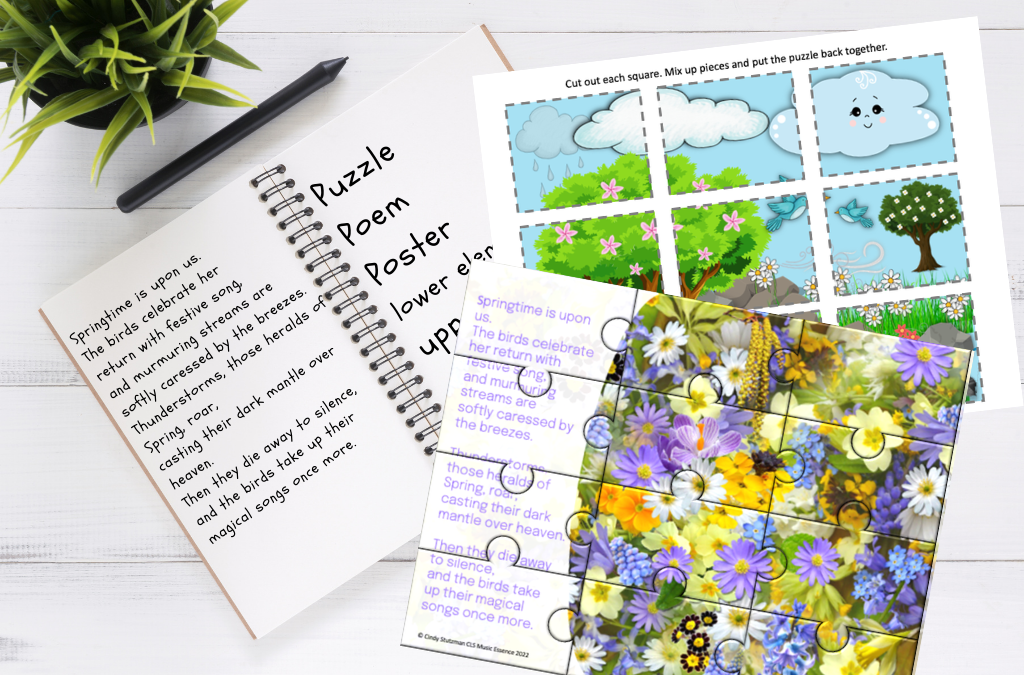
If you want an easy way to get started, grab my free Escape Room in Music Workbook with editable templates. It comes with a quick guide to break down the steps needed to create an escape room for the classroom, and includes a few editable templates to get you started.
Vivaldi Four Season Spring Concerto
Let me share with you why I would highly recommend Vivaldi Four Season Spring Concerto for your music class. When I was a child at the piano I would make up little sound pictures on the piano. It always involved a waterfall and trills for butterflies. Vivaldi’s violin concerto truly paints the picture of springtime so much that one could smell the lilacs in bloom. To compose Spring from Vivaldi’s Four Seasons Vivaldi used a poem to connect each movement in the four concertos to words. It is 1723 when he started writing the Four Seasons so this is an early example of program music which is fassinating.
Allegro 1st movement
Springtime is upon us.
The birds celebrate her return with festive song,
and murmuring streams are
softly caressed by the breezes.
Thunderstorms, those heralds of Spring, roar,
casting their dark mantle over heaven.
Then they die away to silence,
and the birds take up their magical songs once more.
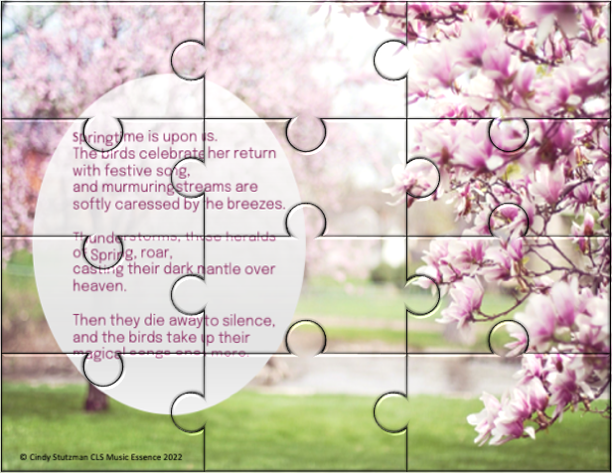
Vivaldi’s violin concerto is a breathtaking sound story with beautiful bird songs, gentle breezes, and yes the little water stream. You hear the thunderstorm with lightning strikes and the final return to the music of birds and blossoms of spring. Not only does it come alive musically but the ritornello form with terraced dynamics is really easy to diagram the arrangement.
Listening Map from Four Seasons Spring by Vivaldi
My favorite way to introduce a song to students is to create a listening map that reveals both form and instrumentation. Having this poem to go with the song is an added bonus. Once you re-listen to the concerto along with the poem I think you will agree that the first movement from Spring from Vivaldi’s Four Seasons is so easy to break down for students to follow.
Vivaldi uses a ritornello form which was common in the Baroque Era. Oh I hope I’m not the only one who had to look up what ritornello meant! Let me share with you what I found. Quite simply, ritornello is Italian for “little return.” So basically after each poem phrase Vivaldi comes back to the B motif given in the very beginning. The beginning is a 2-part motif with terraced dynamics. Another new word that I like. Terraced dynamics is just going from one dynamic to another without a crescendo or decrescendo, “forte – piano.”
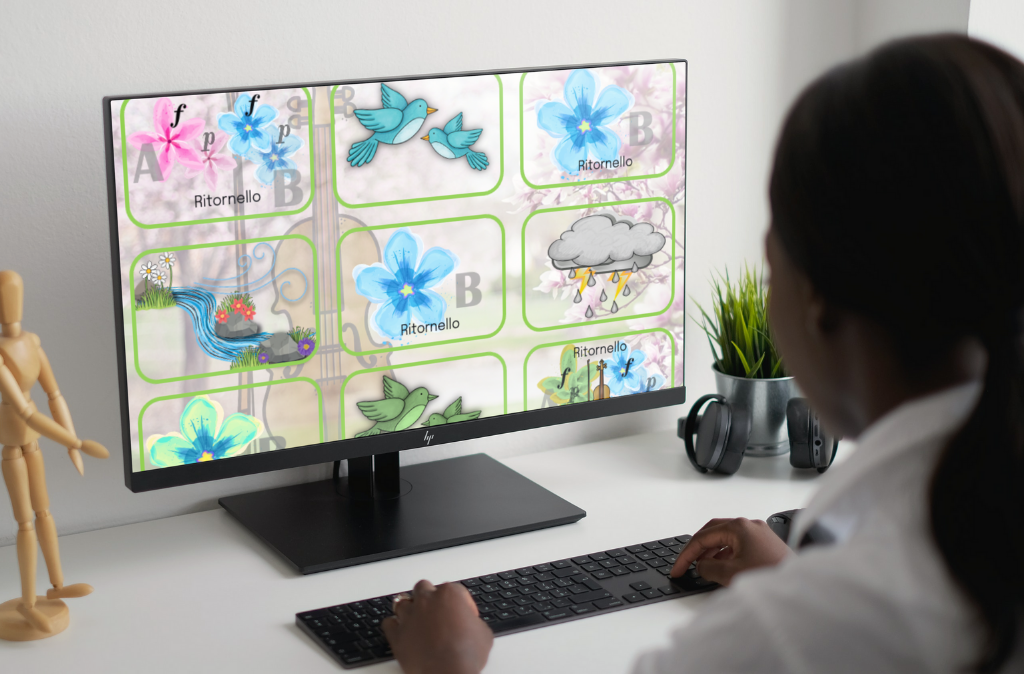
The bird song is beautifully played back and forth between the solo violin and one other violin on lower notes. Imitating the sound of birds in nature.
A thunderstorm rolls through where lightning strikes are played by the solo violin using very-high, rapid scales and arpeggios for each strike.
Then the B motif returns but using the minor scale tones. Even the returning bird songs return in a minor key. For the ending Vivaldi returns to the beginning 2-part motif separated by a violin cadenza. Basically the cadenza is an amazing solo passage. There is so much for students to impact.
Vocabulary Worksheet Clues
Besides being beautifully written, it is easy to choose new music terms that make for a great way to extend the lesson. I like to share vocabulary at the beginning and create worksheets to highlight the word a second or third time. Here are some terms that stood out:
- Concerto
- Program music
- Baroque Era,
- Cadenza
- Ritornello
- Motif
- Terraced Dynamics.
Bio on Music of Vivaldi
Now find some fun facts about the composer and you too can be the next great Lin-Manuel Miranda who showed us all how exciting a historic figure can become. They are not just black and white sketches with a wig on. Each composer seems to have a quirky characteristic or something interesting about their life. Vivaldi was a priest and had the nickname of “The Red Priest” because he had red hair.
Vivaldi couldn’t perform mass due to a health condition, most likely asthma; they assigned him to teach music at an all girls orphanage. He learned to play the violin from his father and traveled throughout Venice, Italy playing the violin alongside his father. Vivaldi was considered to be a virtuoso on violin so teaching music was a likely choice. He spent a combined 30 years teaching at the orphanage and wrote most of his compositions there too.
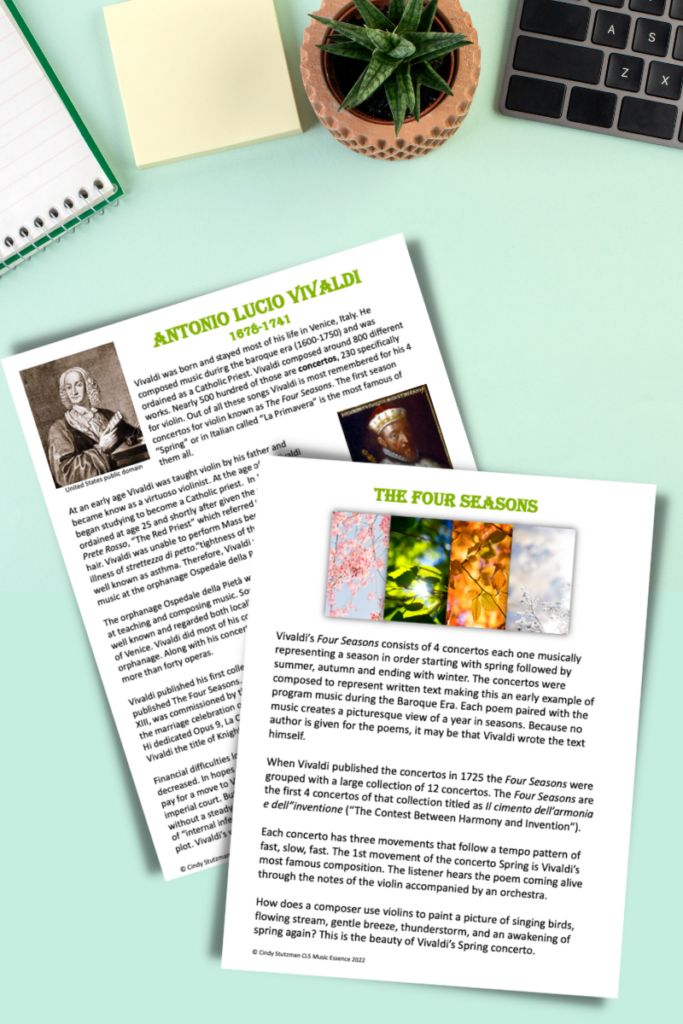
Vivaldi Contract Non-renewed!
Seems being a teacher in the early 1700’s isn’t much different. The board of the orphanage voted each year to retain or get rid of the teacher. Vivaldi wasn’t a unanimous choice and in 1709 the board 7 to 6 voted him off. However, the program suffered and they had to ask him back the next year because his skills were deeply missed. Wow!
Four Season Vivaldi
The Four Season Vivaldi wrote is the beginning of a collection titled as Il cimento dell’armonia e dell”inventione (“The Contest Between Harmony and Invention”). It is the first four concertos in this collection and Spring from Vivaldi’s Four Seasons is the first followed in order with Summer, Autumn and Winter. The beginning allegro movement of Spring is the most popular. Of the four, Spring is the only season that borrows its motifs from one of Vivaldi’s many operas. It is believed that the inspiration for the concertos came from Vivaldi’s time in the countryside around Mantua.
Study Notes for Music Vivaldi
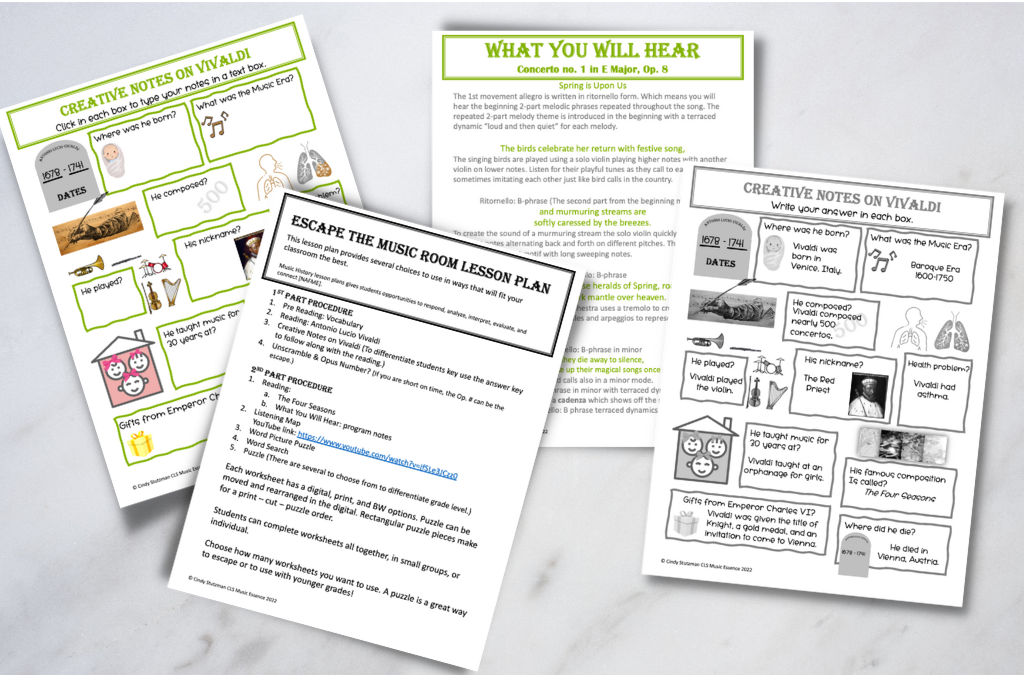
Once you have the reading material another way to extend the lesson is to create study notes. This can be similar to an interactive notebook page. Study notes will help guide your students to the important facts you want them to understand.
The study notes can work in two ways. Students can fill in the blanks as they read the material or use it in reverse. Students use the answer key for the study notes and highlight the text where the information is given. This is useful for differentiating student needs. Adding pictures to the notes is also helpful to retain information and make the activity enjoyable whether students are filling in or looking up facts.
Four Seasons Spring by Vivaldi Escape Room

To fill the remainder of time just add some fun worksheets like unscramble vocabulary terms, match the word to a picture, and word search. I like to find a way for students to figure out the opus number of the concerto. A morse code decipher works well or a math picture puzzle is another fun ending. Students can work together, individually or in small groups to escape.
If you want to see some ideas here are popular escape rooms in music below are a couple I have created I have created. Also checkout my blog How the History of Musical Theater West Side Story will easily engage students for more ideas.
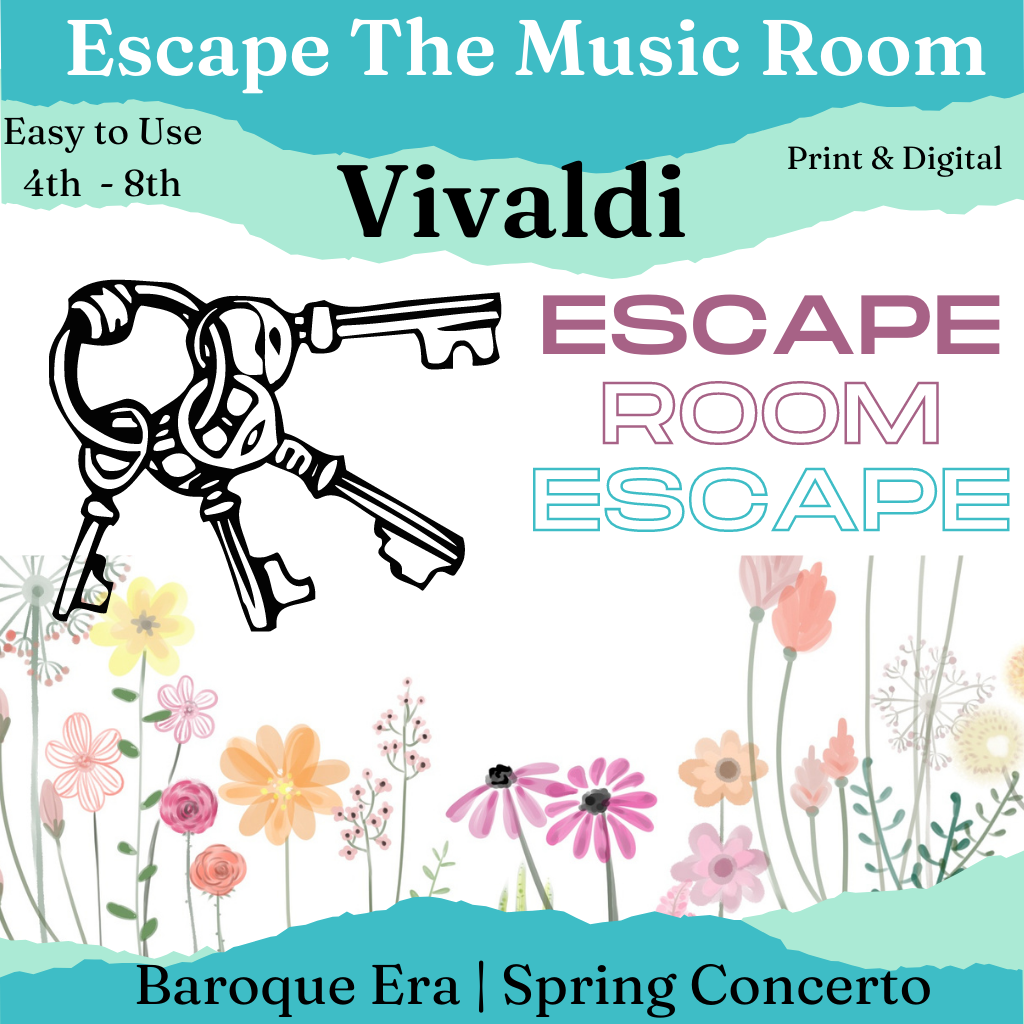
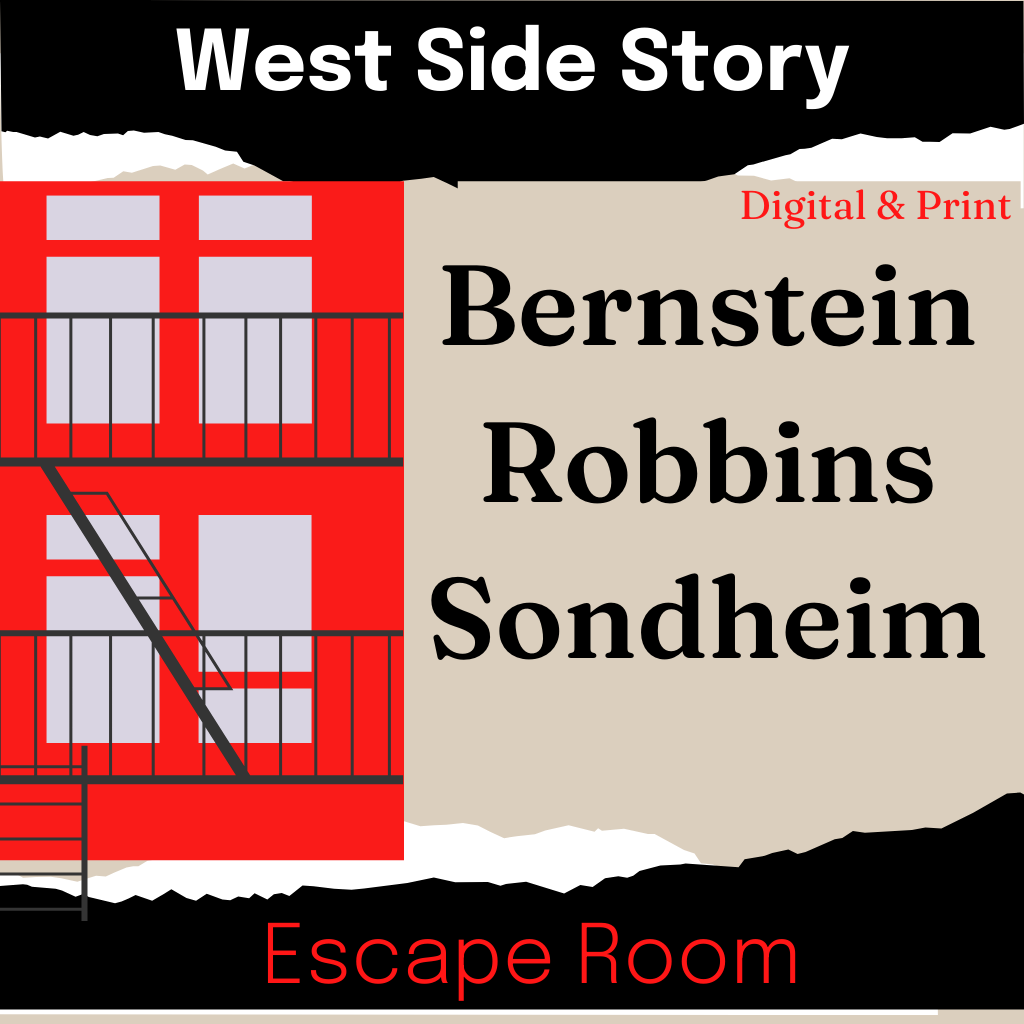


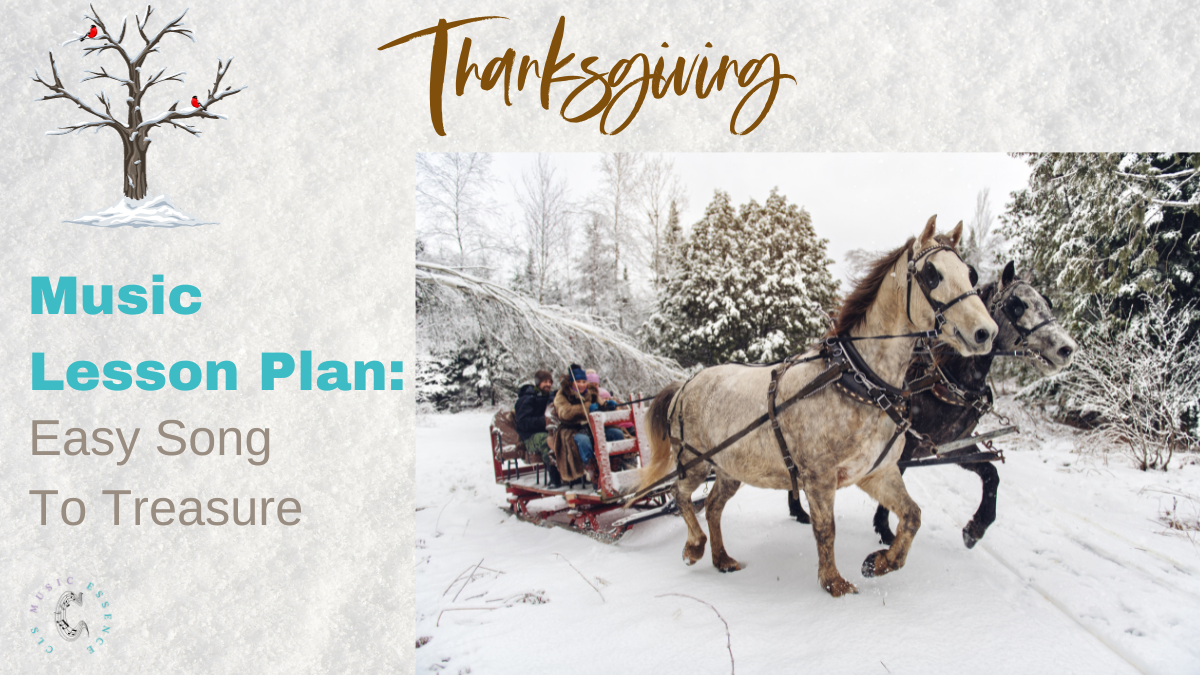

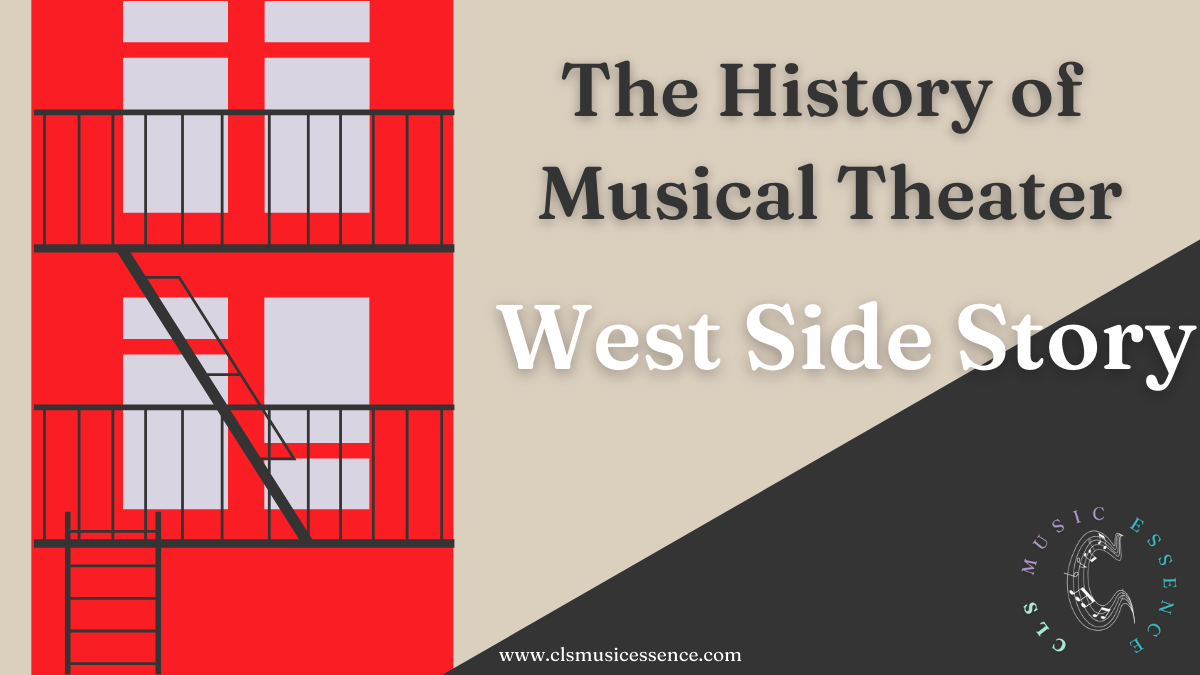
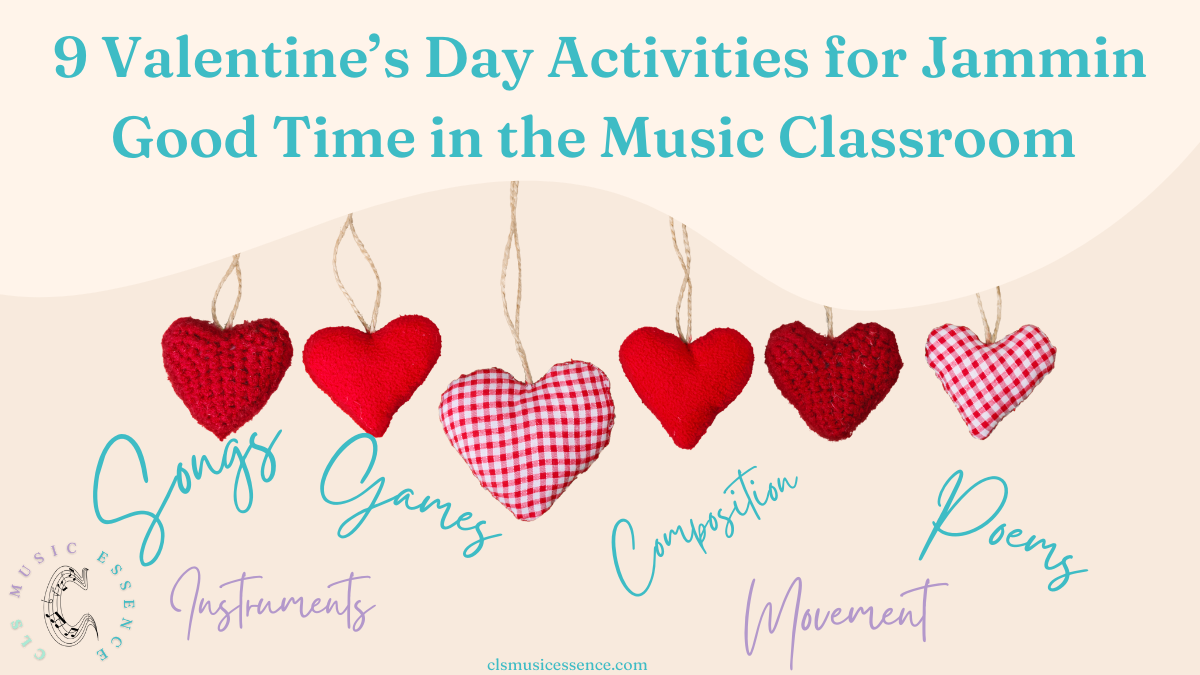


5 Comments